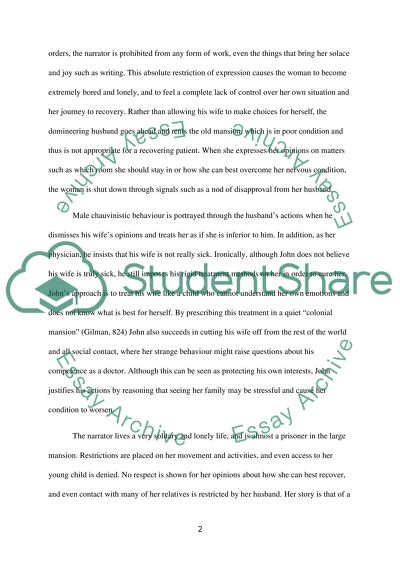Cite this document
(“Charlotte Gilman's The Yelow Wallpaper and Herland Essay”, n.d.)
Charlotte Gilman's The Yelow Wallpaper and Herland Essay. Retrieved from https://studentshare.org/literature/1586211-charlotte-gilmans-the-yelow-wallpaper-and-herland
Charlotte Gilman's The Yelow Wallpaper and Herland Essay. Retrieved from https://studentshare.org/literature/1586211-charlotte-gilmans-the-yelow-wallpaper-and-herland
(Charlotte Gilman'S The Yelow Wallpaper and Herland Essay)
Charlotte Gilman'S The Yelow Wallpaper and Herland Essay. https://studentshare.org/literature/1586211-charlotte-gilmans-the-yelow-wallpaper-and-herland.
Charlotte Gilman'S The Yelow Wallpaper and Herland Essay. https://studentshare.org/literature/1586211-charlotte-gilmans-the-yelow-wallpaper-and-herland.
“Charlotte Gilman'S The Yelow Wallpaper and Herland Essay”, n.d. https://studentshare.org/literature/1586211-charlotte-gilmans-the-yelow-wallpaper-and-herland.


